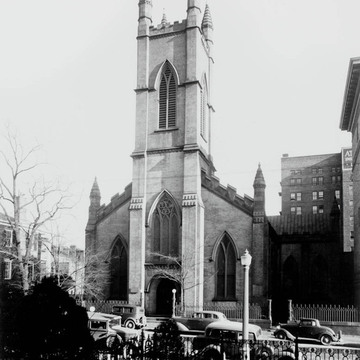Richmond's major entry into the mid-nineteenth-century Gothic Revival mode came not from Episcopalians, as was common in many other cities, but from Presbyterians. Virginia Episcopalians remained resolutely “low church,” and hence the introduction of the style fell to a group of Richmond Presbyterians who wanted a building that would be “the most symmetrical and pleasing to an educated eye.” The vestry committee traveled north to Brooklyn and asked Lafever to design a church. He complied with this brick English Decorated Gothic edifice. Lafever is best known for his
You are here
Second Presbyterian Church
1845–1848, Minard Lafever; c. 1905, chapel, Noland and Baskervill. Later additions. 13 N. 5th St.
If SAH Archipedia has been useful to you, please consider supporting it.
SAH Archipedia tells the story of the United States through its buildings, landscapes, and cities. This freely available resource empowers the public with authoritative knowledge that deepens their understanding and appreciation of the built environment. But the Society of Architectural Historians, which created SAH Archipedia with University of Virginia Press, needs your support to maintain the high-caliber research, writing, photography, cartography, editing, design, and programming that make SAH Archipedia a trusted online resource available to all who value the history of place, heritage tourism, and learning.














